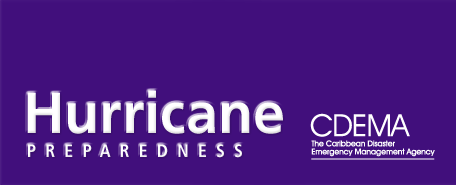|
|
Glossary
There are 83 entries in this glossary.| Term | Definition |
|---|---|
| Storm |
An individual low-pressure disturbance, complete with winds, clouds, and precipitation. Examples include thunderstorms, tornadoes, or even tropical cyclones. The name is associated with destructive or unpleasant weather |
| Storm Surge |
An abnormal rise in sea level accompanying a hurricane or other intense storm, and whose height is the difference between the observed level of the sea surface and the level that would have occurred in the absence of the cyclone. Storm surge is usually estimated by subtracting the normal or astronomic high tide from the observed storm tide. Note: waves on top of the storm surge will create an even greater high-water mark. |
| Storm Tide |
The actual level of seawater resulting from the astronomic tide combined with the storm surge. If the storm comes ashore during astronomical low tide, the surge will be decreased by the amount of the low tide. If the storm makes landfall during astronomical high tide, the surge will be that much higher. |
| Subtropical |
The region between the tropical and temperate regions, an area between 35 and 40 degrees North and South latitude. This is generally an area of semi-permanent high pressure that exists and is where the Azores and North Pacific Highs may be found. |
| Subtropical Cyclone |
A low pressure system that develops over subtropical waters that initially has a non-tropical circulation but in which some elements of tropical cyclone cloud structure are present. Subtropical cyclones can evolve into tropical cyclones. |
| Subtropical Depression |
A subtropical cyclone in which the maximum sustained surface wind speed (using the U.S. 1-minute average) is 61 kph (38 mph) or less. |
| Subtropical High |
A semi-permanent high-pressure region near 30 degrees latitude. |
| Subtropical Storm |
A subtropical cyclone in which the maximum sustained surface wind speed (using the U.S. 1-minute average) is 63 kph (39 mph) or more. |
| Thunderstorm |
A local storm produced by a cumulonimbus cloud, always with lightning and thunder, and usually accompanied by strong gusts of wind, heavy rain, and sometimes hail. |
| Tradewinds |
The wind system, occupying most of the tropics, which are northeasterly in the Northern Hemisphere and southeasterly in the Southern Hemisphere. |
| Tropical Cyclone |
A general term for all cyclone circulations originating over tropical waters. Its characteristics include a warm-core, non-frontal pressure system of synoptic scale that originates over the tropical or subtropical waters and has a definite organized surface. Used to define wind circulations rotating around an atmosphere which include tropical depressions, tropical storms, and hurricanes. The strongest winds of this cyclone are near the Earth's center. |
| Tropical Depression |
A tropical cyclone in which the maximum sustained surface winds (1 minute average) are 61 kph (38 mph) or less. Characteristically having one or more closed isobars, it may form slowly from a tropical disturbance or an easterly wave, which has continued to organize. At this point, it gets a cyclone number, starting with "TD01" at the beginning of each storm season. Aliases (separate with |): TD
|
| Tropical Disturbance |
A discrete system of clouds, showers, and thunderstorms (organized convection) that originate in the tropics. Generally 100 to 300 miles in diameter and originating in the tropics or subtropics, disturbances have a nonfrontal migratory character, and maintain their identity for 24 hours or more. It may or may not be associated with a detectable perturbation of the wind field. An upper level of low pressure causes this to occur. Approximately 100 of these types of events occur annually during hurricane season. |
| Tropical Storm |
A tropical cyclone in which the maximum sustained surface wind speed (1 minute average) is within the range of 63 to 117 kph (39 to 73 mph). At this point, the system is given a name to identify and track it. In the Atlantic/Caribbean/Gulf of Mexico basin, the names start with "A" each season. Aliases (separate with |): TS
|
| Tropical Storm Warning |
A warning issued by the National Hurricane Center for tropical storm conditions including possible sustained winds within the range 63 to 117 kph (39 to 73 mph) which are expected in a specified coastal area within 24 hours or less. Advisories will be issued every three hours if the storm is close to land. |


























